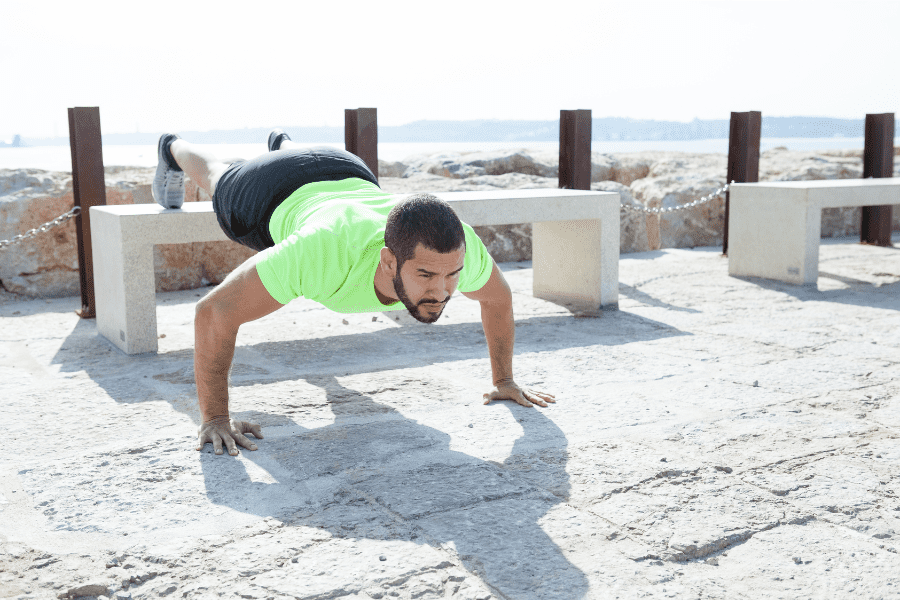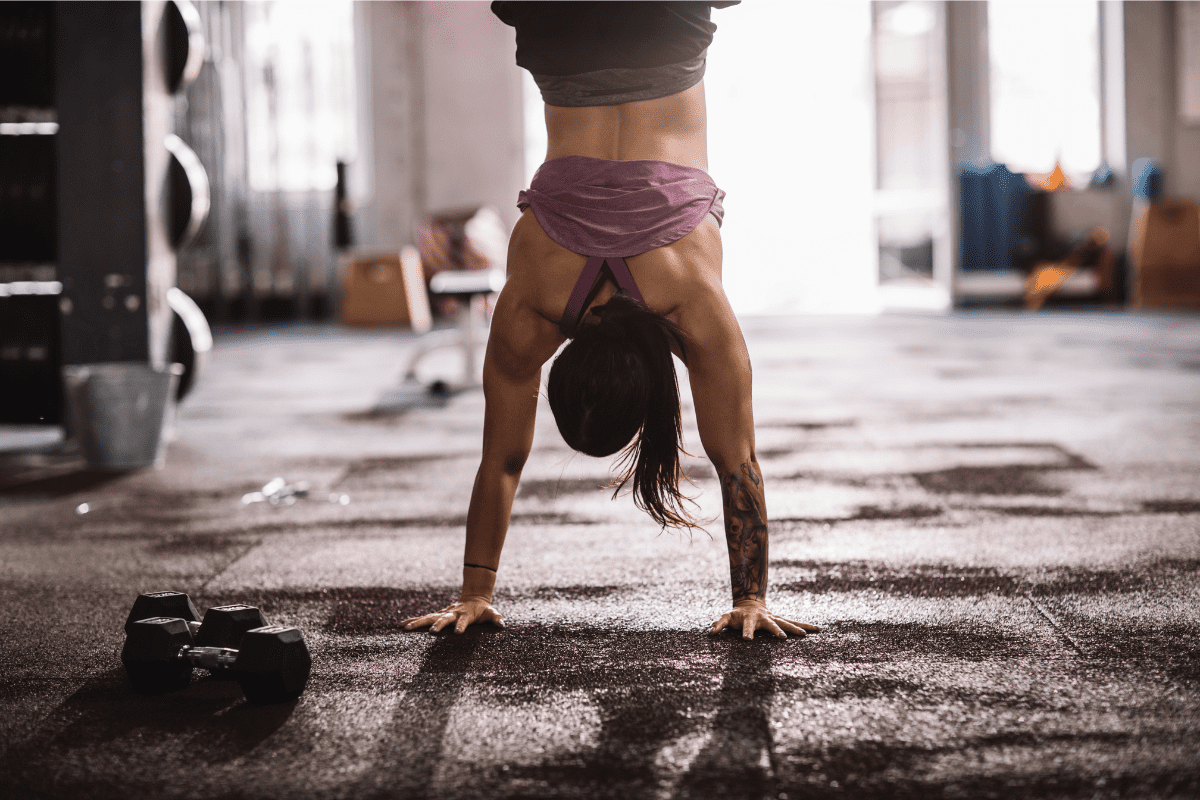Handstand Push-ups (How To, Muscles Worked, Benefits)
If you’re looking to take your training to the next level, improve your upper body strength, and develop an impressive party trick, Handstand Push-Ups are an excellent exercise to add to your routine. These challenging movements require not only strength, but also balance, control, and technique.
In this guide, I’ll take you through everything you need to know to master the art of the Handstand Push-Up, from the basic progressions and prerequisites to the common mistakes and advanced variations.
How To Do Handstand Push-ups
Equipment Needed
- Sturdy Wall (unless doing them freestanding)
- Parallette Bars (optional for deficit push-ups)
Muscles Worked
- Shoulders
- Triceps
- Upper Back (Rhomboids & Trapezius to stabilize scapula)
- Core (Rectus Abdominis and Obliques)
Step-by-Step Instructions
- Start in a handstand position with your hands on the ground, arms straight, and body in a straight line. You can kick up into the handstand or walk your feet up a wall to get into position.
- Slowly lower yourself down, bending your elbows and keeping your body in a straight line. Your head should lightly touch the ground, or a mat, and then push back up to straight arms.
- Control your descent and make sure to keep your body in a straight line throughout the movement. Avoid arching or sagging your back, and keep your elbows close to your body.
- Once you can perform a single repetition with proper form, aim to do sets of 3-5 reps. Rest for 2-3 minutes between sets, and focus on maintaining good technique and control.
- As you get stronger, you can progress to more challenging variations of the handstand push-up, such as deficit handstand push-ups or freestanding handstand push-ups.
Coaching Points
Handstand Push-ups require a significant amount of strength in the shoulders, triceps, and core. Therefore, it’s important to build a strong foundation by focusing on exercises that target these muscle groups. This may include exercises like Shoulder Presses, Dips, and Planks.
Handstand push-ups require a lot of coordination and balance. Concentrate on your form like keeping your core tight and keeping your elbows close to your body.
Don’t get frustrated! With consistent practice and dedication, you can conquer this challenging movement.
Benefits of Handstand Push-Ups
Handstand Push-ups are a highly effective exercise for developing strength in your shoulders, triceps, and upper back muscles.
To maintain balance in a handstand position, you must engage your core muscles. Regular practice of Handstand Push-ups can help develop a strong and stable core.
Handstand Push-ups require a high degree of body control and balance. With practice, you can improve your ability to control your body in space.
Handstand Push-Up Progression
Most people will not be able to do a Handstand Push-up on their first try. In fact, many people will struggle even attempting to try a Handstand Push-up.
No worries. Here are some exercises you can use as a progression to work toward your first Handstand Push-Up.
Wall-Supported Handstand Holds
First, see if you can get into and hold the starting position.
Begin by standing with your back to a wall and your hands on the ground. Walk your feet up the wall until your body is in a straight line, with your feet resting against the wall. Hold this position for as long as you SAFELY can, gradually working up to longer hold times.
While you’re Handstand Hold is improving, start working on these exercises to build shoulder strength.
Dumbbell Shoulder Press

Dumbbell Shoulder Presses are a great option to develop shoulder strength. I particularly like using dumbbells here because they require each arm to work independently and demand a bit more balance and shoulder stability than pressing a bar.
Having said that, any type of overhead press to improve shoulder strength is worth utilizing in your workouts.
Feet Elevated Push-Ups

This is assuming you can already knock out a quality set of 20 regular push-ups (if not, start there first).
Place your feet up on a bench or box and perform sets of 10 Feet Elevated Push-ups. Then, move on to placing your hands on the ground and walking your feet up the wall. Each time you can do a successful set of 10 push-ups, try to walk your feet up a bit higher.
This will not only improve your chest and shoulder strength, but it will challenge and develop your core strength and stability as well.
Wall Supported Handstand Push-Up
As your Handstand Holds continue to improve and your pressing strength continues to improve, periodically give a Handstand Push-up against the wall another shot. With continued practice, you may just surprise yourself.
Freestanding Handstand Push-Ups
When most people refer to Handstand Push-ups, they’re assuming there is a wall involved to be able to lean the feet against.
However, there is an even more advanced variation that is one of the most challenging bodyweight exercises you’ll find in the gym. That is a Freestanding Handstand Push-up. This is a push-up that is done without the aid of a wall which takes even more balance, control and core stability.
Handstand Push-Up Alternatives
If you’re looking for Handstand Push-up alternatives to use as a replacement for them in your workout, I would suggest the two exercises listed above in the progression.
Dumbbell Shoulder Presses and Feet Elevated Push-ups are two of the best exercises to help develop shoulder strength, core stability, balance and coordination.
If you’d like more options, check out these 10 Handstand Push-up alternatives for shoulder development.
More Links and Info
If you’d like to see more exercises like this, make sure to check out the Upper Body Lifts section of our Exercise Library. There you’ll find dozens of movements, all with complete detailed instructions.

